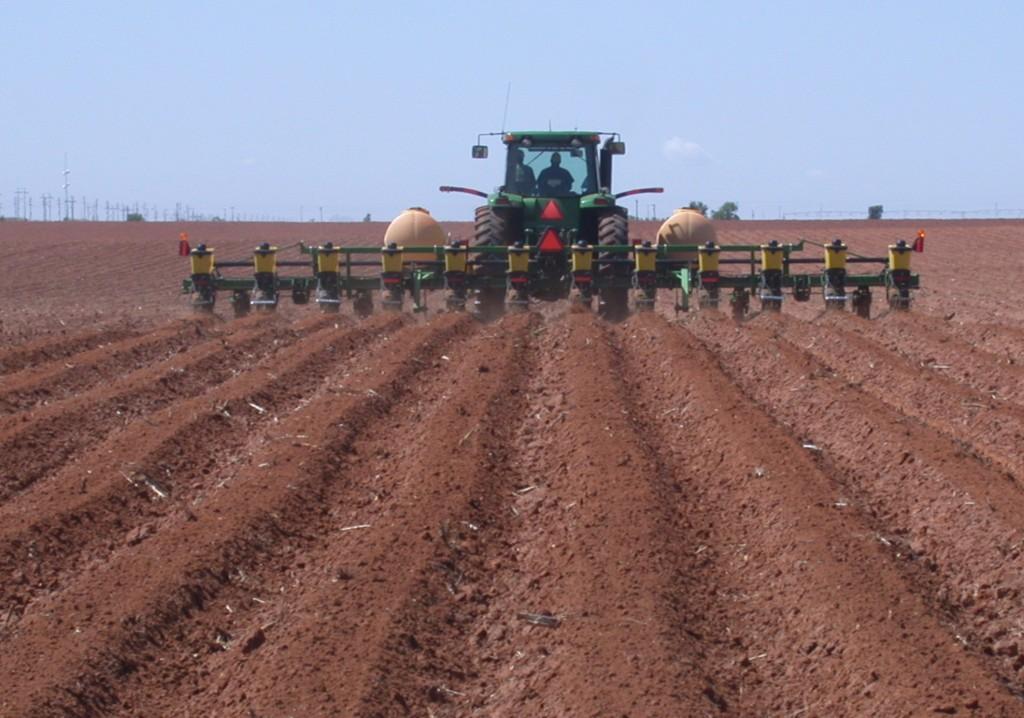
Agricultural News
Seth Byrd Says Replanting Cotton Seldom Results in Better Crop
Fri, 03 Jun 2022 12:07:19 CDT
 KC Sheperd, Farm Director, visited with OSU's Seth Byrd about the condition of the Oklahoma cotton crop and different seedling diseases brought on by environmental conditions.
KC Sheperd, Farm Director, visited with OSU's Seth Byrd about the condition of the Oklahoma cotton crop and different seedling diseases brought on by environmental conditions.
There was a decent amount of cotton that was planted in the last week of May, Byrd said, prior to the rain most of the state received.
"If you had overhead irrigation, then you likely were able to create a favorable seedbed condition, moisture wise, for that planted cotton," Byrd said. "But you also knew you were probably on borrowed time since you were totally reliant on irrigation at that point."
For producers using drip, irrigation, or dryland, Byrd said they were planting and hoping that the forecasted rain was going to come, which it did. That is certainly going to help cotton that was dry planted or planted earlier in May push through and germinate, he added.
"This week, we are seeing some heavier rain events and some bigger rain totals fall," Byrd said. "If the cotton has emerged and is up, it is going to help to a certain extent."
It would be more ideal, Byrd said, if the rainfall was spaced out more to give a better planting window. With the last six to eight months being dry as it is, Byrd added, it is hard to turn down any moisture.
"I'd say most of your irrigated cotton is in the ground at this point," Byrd said. "Dryland tends to wait until late May at the earliest for our traditional areas."
Byrd said northern Oklahoma is probably all planted. The majority of acres are toward the west-central and southwest portion of the state, he added, and for those areas, late May tends to be the starting window for the dryland crop.
"I'd say that our irrigated crop is probably about wrapped up, if not totally wrapped up," Byrd said. "Dryland was maybe just starting to think about getting started when some of these rain events started to occur."
For areas in Oklahoma that received too much rain too quickly, Byrd said that is going to slow crop progress down. Cool conditions, plus excess moisture, can flare seedling disease issues, he added.
"That really all ties back to the conditions that we have been through," Byrd said. "So, the cooler temperatures and the excess moisture tends to be why we will see flare seedling disease issues."
On the other end of things, Byrd said you don't want to plant ahead of really heavy rain.
"There are areas in a 24-hour span that we are seeing 3, 4, close to 5 inches of rain," Byrd said. "You don't really want to plan ahead of that because you know you are going to get that pounding rain, and it is going to cause issues."
Waiting for fields to dry out to plant, Byrd said, is going to compress the planting window.
"We would like to see some dry land usually get planted around the first week of June," Byrd said. "There may be areas where we are not able to get back into the field until the week of the 6th."
In general, Byrd said the later we go, even with dryland you can run into some maturity issues if you have a wet season or are further north where you have a shorter period of ideal heat accumulation during the key growth stage.
Byrd also talked about diseases that have come up in cotton so far.
"There are a lot of suspicions on Rhizoctonia, which is one that is pretty common in these kinds of conditions," Byrd said.
There is a variety of seedling diseases, Byrd said, but many have similar symptoms. A few symptoms, he added, include having a seedling emerge and die, or having a seedling germinate prior to emergence, then die.
Byrd said Lesions around where the stem of the plant meets the soil surface are another sign.
When faced with seedling disease, Byrd said the producer might need to consider replanting if time allows and it makes sense financially.
"Oftentimes, it is a better call to keep a sub-optimal stand," Byrd said. "Maybe it is hard to look at, but you lose more by trying to replant at a later calendar date because you don't know what you are going to get later. You kind of know what you are dealing with now, and sometimes the evil you know is better than the evil you don't know."
If a producer has a substantial number of acres left to plant, with some sub-optimal stands already planted, Byrd said they may have the chance to plant enough cotton in a later window to make up for the sub-optimal stands.
"In my experience, in research trials and consulting with producers, more often than not, keeping a stand is safer and more rewarding financially than trying to replant," Byrd said. "So, I think I would probably concentrate on the acres that I have not got planted yet and hopefully the moisture we are getting from this hangs around long enough to where you can get those acres into good conditions and take advantage of the moisture you have got."
Click the LISTEN BAR below to hear more from Seth Byrd on Oklahoma's cotton condition and advice for producers.
WebReadyTM Powered by WireReady® NSI
Top Agricultural News
More Headlines...





